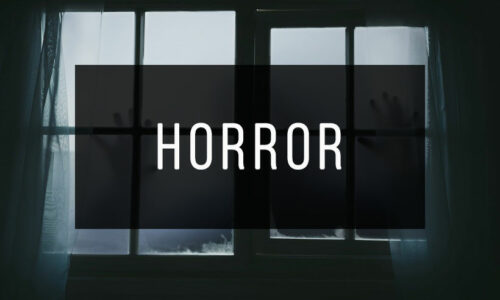Step into the richly detailed world of Honoré de Balzac with our free collection of Honoré de Balzac books in PDF format.
Honoré de Balzac, a cornerstone of French literature, is best known for La Comédie Humaine, a monumental series of interconnected novels and stories that depict the complexities of 19th-century society.
From the gripping Eugénie Grandet to the powerful Father Goriot and beyond, Honoré de Balzac’s writing offers timeless insights into human nature and the social dynamics of his era.
Ideal for fans of classic literature and sweeping narratives, this collection provides an opportunity to explore the genius of a writer who influenced countless authors with his depth and storytelling skill.
Download these Honoré de Balzac books in PDF now and immerse yourself in the brilliance of one of history’s greatest literary observers.
1) The Unknown Masterpiece

The Unknown Masterpiece is a short story first published in the newspaper L'Artiste in August 1831. The story is a reflection on art and has had an important influence on modernist artists.
The young Nicolas Poussin, still unknown, visits the painter Porbus in his workshop. He is accompanied by the old master Frenhofer, who admits that he has been unable to find a suitable model for his own masterpiece, which depicts a beautiful courtesan named Catherine Lescault. He has been working on this future secret masterpiece for ten years.
Poussin offers his own lover as a model. Gillette is so beautiful that Frenhofer is inspired. Poussin and Porbus come to admire the painting, but all they can see is part of a foot that has been lost in a swirl of colors.
2) El Verdugo

El Verdugo is a short story published in 1829 and set in the coastal town of Menda (Spain) during the Peninsular War. The officer Victor Marchand is in command of the occupying French garrison, who in turn is in love with Clara, the daughter of the local grandee, the Marquis Léganès.
When an uprising is led by the Marquis against the French garrison, Marchand survives because he is warned by Clara, and flees to the nearby French military headquarters. A few days later, the French retake Menda and the town surrenders without a fight.
The French general accepts the surrender and promises not to sack the town in exchange for the surrender of the leading citizens, and orders the hanging of the leaders of the uprising, including the Marquis Léganès and his entire family. Marchand tries to convince Clara that she will be saved if she agrees to marry him, but she refuses.
3) Gobseck

Gobseck is a novel whose main theme is greed. It first appeared in outline form in La Mode in March 1830 under the title l'Usurier (The Usurer), and then in novel form in a volume published by Mame-Delaunay under the title Les Dangers de l'inconduite. The final title, Gobseck, appeared in 1842 in the Furne edition of La Comédie Humaine.
The plot is set in the French Restoration, and introduces us to the lawyer Maître Derville and the Vicomtesse de Grandlieu. Derville tells a story centered on Anastasie de Restaud, who is the daughter of a rich bourgeois who has married into the aristocracy, but who is bored with her marriage because it lacks love and passion.
As a result, Anastasie de Restaud has an affair with Maxime de Trailles and spends her fortune on him, so she turns to the usurer Jean-Esther van Gobseck for financial help.
4) Louis Lambert

Louis Lambert is a novel written during the summer of 1832. It focuses on the life and metaphysical ideas of the child genius Louis Lambert, who was fascinated by the Swedish philosopher Emanuel Swedenborg. It also tells of his only friend, a classmate called "the Poet".
This work could be considered a fictionalized autobiography of Balzac, as it offers a glimpse into his childhood, with details and events from his life. It is worth noting that while studying at Vendôme, Balzac wrote an essay entitled Traité de la Volonté (Treatise on the Will) in which he analyzed Swedenborg's philosophy.
The novel begins with a description of Louis' background. In 1811 he met the Swiss writer Madame de Staël, who, impressed by his intellect, paid his tuition at the Collège de Vendôme. There he meets "the Poet", rejected by the other students, the two boys bond through discussions of philosophy and mysticism.
5) Sarrasine

Sarrasine is a novel published in 1830, and is part of the Human Comedy.
Balzac, who began writing in 1819 while living alone in the Rue Lesdiguières, undertook the composition of Sarrasine in 1830. Although he had been producing steadily for more than a decade, Sarrasine was one of his first publications to appear without a pseudonym.
During the period in which the novel was written, Balzac participated in many salons, including that of Madame Recamier. Around the time Sarrasine was published, Balzac experienced great success with another work, La Peau de Chagrin (The Wild Ass's Skin of 1831).
6) The Elixir of Life

The Elixir of Life features Don Juan Belvidero, who is dining with his friends in the family palace, when a servant informs him that his father, the wealthy nobleman Bartolommeo Belvidero, is dying.
Juan goes to his father's room, and his father orders him to take a phial of liquid from one of the drawers, and then, on his deathbed, orders Juan to rub his body with this liquid after he is dead, saying that it will bring him back to life.
After informing his guests of his father's death and bidding them farewell, Juan returns to the room and puts a drop of the liquid in his father's eye, after which the eye comes back to life. After the initial shock, Don Juan kills his father's eye. Years go by and now he is the one who, on his deathbed, tells his son Felipe about the phial of liquid...
7) The Human Comedy Philosophical Studies I

It is part of a vast series of novels published between 1829 and 1847, as Balzac wished to produce a unified series of books. It is a study of French society from the French Revolution to the eve of the Revolution of 1848.
The Human Comedy deals with philosophical, social, economic and legal themes, it moves from Paris to the provinces; and from society to the bourgeoisie. Balzac divided it into categories, the one that concerns us Philosophical Studies, refers to the causes that determine human action.
Among the novels presented in The Human Comedy Philosophical Studies I is The Magic Skin of 1831, also known as The Wild Ass's Skin. It tells the story of a young man who finds a piece of magic skin (from a wild ass) that fulfills all his wishes. However, for every wish granted, the skin shrinks and consumes a portion of his physical energy.
8) The Human Comedy Philosophical Studies III

The Human Comedy is a collection of stories which describe French society in the period of the Restoration and the July Monarchy. The works included in the "Philosophical Studies III" study the causes of the effects that develop in society and affect the people without distinction of gender or age.
Among the works included are Gambara, in which Count Andrea Marcosini strolls through the Palais-Royal in Paris, where he spots in the crowd the face of a woman with “fiery” eyes. He is so spellbound that he chases her into an alley where she disappears. He later discovers that she is married to a composer and instrument maker named Gambara.
Another novel is Massimilla Doni, which introduces us to Massimila Doni, wife of the Duke of Caetano. There is also Emilio Memmi, prince of Varese who is in love with Massimila Doni, and although his love is reciprocated it remains platonic and chaste.
9) The Human Comedy Philosophical Studies IV

The Human Comedy Philosophical Studies IV includes stories such as Maître Cornélius, published in 1831. It introduces us to Marie de Saint-Vallier, who attends mass with her husband, the Comte de Saint-Vallier.
While her husband is asleep, Marie's lover, Georges d'Estouteville, approaches her to tell her that he will go to her house that night, bursting in from the house of Cornelius Hoogworst, who lives next door, as a result of which certain events will be triggered that will mark the plot of the story.
Another story is The Exiles, a work of speculative historical fiction set in the 14th century. Sergeant Tirechair, who lives in a house near Notre-Dame, receives two strangers, an old man and a young man. The old man is none other than the poet Dante Alighieri, who is in exile in Paris. The young man named Godfrey turns out to be a nobleman who is unaware of his noble birth.
10) The Human Comedy Philosophical Studies V

Balzac is considered one of the founders of realism in European narrative, his stories were intended to describe the realities of life in contemporary bourgeois France. The Human Comedy Philosophical Studies V includes Catherine De' Medici, a historical account of this Italian noblewoman who was queen consort of France.
Much of the story deals with other people who lived in that period of history and how they perceived Catherine's motives. Balzac also writes about power and French historical events (although at times he resorts to fiction), religious movements. He also goes into detail describing the architecture.
Another story is that of Louis Lambert, a boy genius and his friend known as "the Poet", who attend the Collège de Vendôme. Due to the rejection they receive from their classmates and constant reprimands from their teachers, they take refuge in conversations about philosophy as their friendship blossoms.
11) The Human Comedy Scenes from Parisian Life II

One of the three parts of The Human Comedy is The Studies of Manners, which in turn is divided into six groups of novels, called "scenes"; one of them is Scenes from Parisian Life II.
In it we can get the story A Prince of Bohemia, which is narrated by the poet Raoul Nathan, who tells the story of Charles Edward La Palferine, a member of the Rusticolis, a family that in the past enjoyed fame and fortune. Also featured is Claudine du Bruel, a married woman who loves La Palferine madly, but he cares little for her, and seeks only his own interest.
Also included is A Man of Business, where Balzac tackles the fine art of debt collection as it was practiced in Paris in the 1830s. In addition to the theme of finance we also have romance as one of the plots of the story.
12) The Human Comedy Scenes from Parisian Life Part V

The Human Comedy Scenes from Parisian Life Part V includes The Firm of Nucingen, whose story is told by an anonymous narrator who eavesdrops on the conversation of four journalists. The conversation explores the origins of the fortune of Eugène de Rastignac.
One of the journalists tells the others that Rastignac owes his wealth to his business dealings with the Maison Nucingen, the famous Parisian bank run by Baron de Nucingen. In addition, Rastignac is the lover of Delphine, Nucingen's wife. The themes of greed and speculation are present in this work.
There is also the story The Secrets Of The Princesse De Cadignan, an aristocrat whose husband went into exile after the July Revolution of 1830. Diane de Maufrigneuse - that's her name - has also had several affairs that her husband has ignored, and she is especially interested in Daniel d'Arthez, a writer and conservative politician.
13) The Human Comedy Scenes from Parisian Life Part VI

The Human Comedy Scenes from Parisian Life Part VI contains the work Sarrasine, a novella in which the narrator tells Beatrix de Rochefide the story of Ernest-Jean Sarrasine, who falls in love with Zambinella, a Roman opera star.
Sarrasine tries to seduce her but she is reluctant, so he develops a plan to kidnap her at a party. When Sarrasine arrives, Zambinella is dressed as a man, and when the protagonist talks to a cardinal, the latter tells him that Zambinella is actually a castrato.
Facino Cane is a story told in the first person by an anonymous narrator and is about the life of an old blind man named Marco-Facino Cane. The narrator and the old man meet at a wedding celebration and strike up a conversation in which Facino Cane tells him the story of his life and how he lost his status and his money and became blind.
14) The Human Comedy Scenes from Private Life II

Scenes from Private Life II is part of The Studies of Manners, one of the categories of the novel series The Human Comedy. One of its works, entitled Paz, describes and parodies French society in the period of the Restoration and the July Monarchy.
Among the characters is Clementine, who lives in a happy marriage with Count Adam Laginski. Then we have Thaddee Paz, a friend of Adam which Clementine finds attractive and insists that he participate in her various social activities. Paz falls in love with Clementine, but finds himself in a complicated situation as he feels a great devotion to his friend.
Another work is the short story Study of a Woman, whose story tells how a letter written by Eugène de Rastignac, intended for his lover, is mistakenly delivered to Madame de Listomère, a young married woman of high society, which causes great embarrassment for both of them.
15) The Human Comedy Scenes From Provincial Life V

There is a topic to which Balzac turned very often and that was the ambitious young provincial and his struggle to rise in the competitive world of Paris, since the French social system was a subject of great interest to him. For Balzac the bourgeois values of material acquisition were on the rise, so, it was common for the individuals in his stories to be affected by social ambitions.
This brings us to the Scenes From Provincial Life V, one of the categories of The Human Comedy The Studies of Manners. One of its novels is The Collection Of Antiquities, where Balzac portrays the old nobility of the French provinces, ruined by the Revolution.
This is the case of the Marquis d’Esgrignon, who belongs to a high society family, and who tries to adapt to the new social and cultural context that emerged in post-revolutionary France.
16) The Lily of the Valley

The Lily of the Valley is an 1835 novel about love and society by the French novelist and playwright.
It deals with the emotionally vibrant but never consummated affection between Félix de Vandenesse and Henriette de Mortsauf. It is part of his series of novels (or Roman-fleuve) known as The Human Comedy. In his novel he also mentions the château Azay-le-Rideau, which can still be visited today.
Henriette de Mortsauf was inspired by Balzac's close friend Laure Antoinette de Berny, a woman 22 years his senior who greatly encouraged his career. Mme. de Berny died shortly after reading the finished novel, in which Henriette also dies.







































